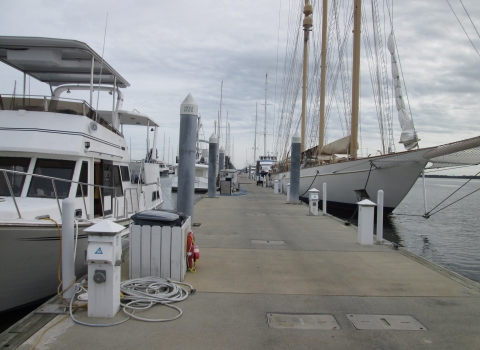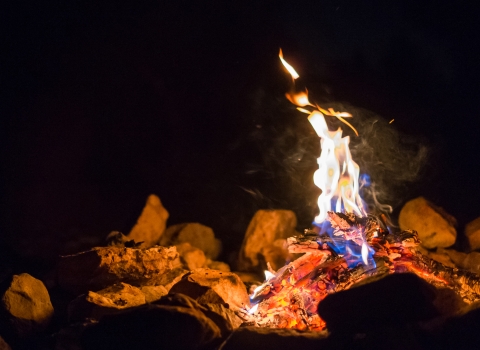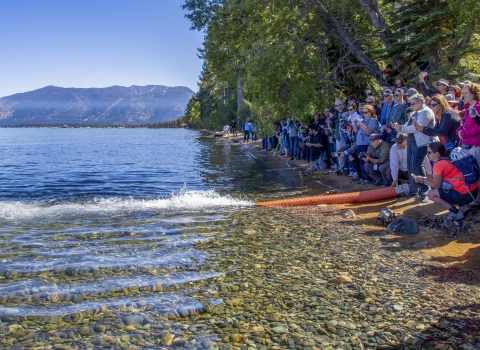The U.S. Fish and Wildlife Service (Service) has made available for public review and comment proposed revisions to the boundaries of the John H. Chafee Coastal Barrier Resources System John H. Chafee Coastal Barrier Resources System
Learn more about the John H. Chafee Coastal Barrier Resources System, which was established under the Coastal Barrier Resources Act in 1982.
Learn more about John H. Chafee Coastal Barrier Resources System (CBRS) in Delaware, Massachusetts, New Hampshire, and New Jersey. The proposed revisions for 148 units (112 existing units and 36 proposed new units) are based on a rigorous set of objective mapping criteria and are designed to fix technical mapping errors and add qualifying areas to the CBRS.
The proposed changes remove about 270 structures (mostly residential) that were mistakenly included within the CBRS due to technical mapping errors, and also add about 200 structures located in highly vulnerable undeveloped coastal barrier areas with flood risk exposure. More than half of those structures proposed for addition are on public lands or parks; the remainder are on private lands. There is, however, a grandfathering provision to allow structures on the ground at the time of inclusion to maintain federally-backed flood insurance until such time that the structure structure
Something temporarily or permanently constructed, built, or placed; and constructed of natural or manufactured parts including, but not limited to, a building, shed, cabin, porch, bridge, walkway, stair steps, sign, landing, platform, dock, rack, fence, telecommunication device, antennae, fish cleaning table, satellite dish/mount, or well head.
Learn more about structure is substantially improved or damaged.
Established by the Coastal Barrier Resources Act (CBRA) of 1982, the CBRS consists of geographic units that are depicted on a set of maps maintained by the Service. Coastal barriers serve as important habitat for fish and wildlife and a natural buffer for vulnerable mainland communities. Not only are coastal barrier ecosystems home to vital natural resources such as coastal wetlands, diverse wildlife, and flyways for migratory birds, they also protect public safety and the substantial investments along mainland coastal communities. Undeveloped coastal barriers coastal barriers
Learn more about coastal barrier landforms.
Learn more about coastal barriers and wetlands absorb the brunt of the destructive forces of hurricanes and storm surges, reducing wave energy and inland flooding and providing resistance to the flow of water. A recent study shows that coastal wetlands avoided $625 million in direct flood damages during Hurricane Sandy.
Nationally, the CBRS contains 862 geographic units that encompass 3.5 million acres of relatively undeveloped areas along the Atlantic, Gulf of Mexico and Great Lakes, U.S. Virgin Islands, and Puerto Rico coasts. The CBRA limits most new federal funding for development within these storm-prone areas, saving American taxpayers millions of dollars in spending for roads, wastewater and potable water systems, disaster assistance, and subsidized flood insurance. The CBRA imposes no restrictions on development conducted with private, state, or local funds.
Following Hurricane Sandy in 2012, the Department of the Interior provided $5 million through the Disaster Relief Appropriations Act of 2013 to modernize the official maps of the CBRS along the North Atlantic coast. The official maps of the CBRS were first created more than 35 years ago, having used what are now outdated base maps and cartographic techniques. Comprehensively revising the CBRS maps will enhance coastal resiliency and sustainability following Hurricane Sandy by improving compliance with the CBRA through more reliable maps and data, and by adding other qualifying vulnerable coastal areas to the CBRS. The modernization of the maps is a good-government effort that will make the CBRS data more accessible and user-friendly for public officials, surveyors, real estate agents, developers, and others planning coastal infrastructure projects, habitat conservation efforts, and flood risk mitigation measures.
The proposed revisions to the boundaries can be viewed on the Service’s website at https://www.fws.gov/project/hurricane-sandy-remapping-project. The website also contains information on how to submit public comments and participate in virtual public meetings to be held via webcast and teleconference.



